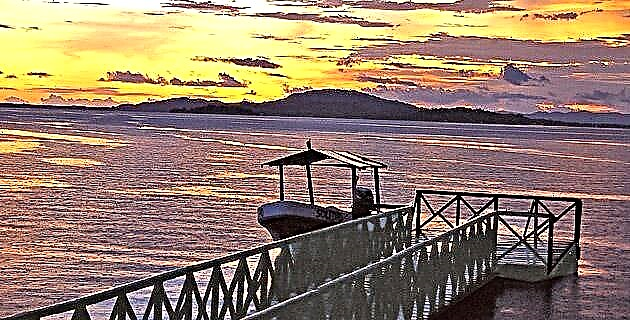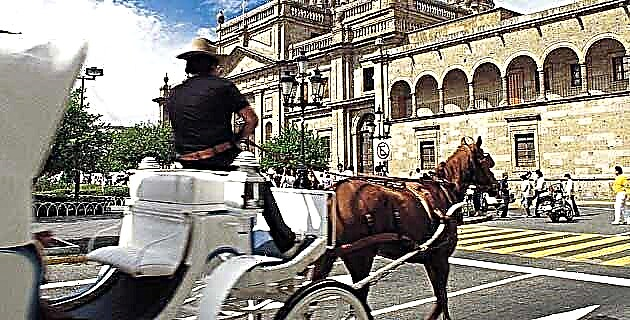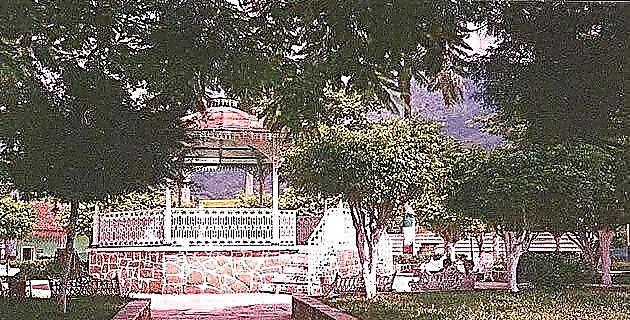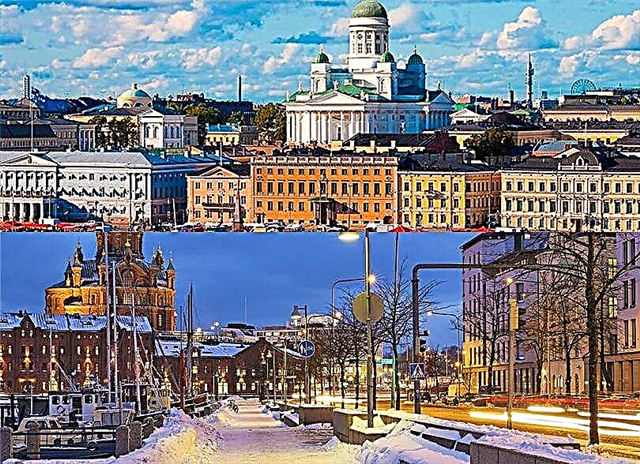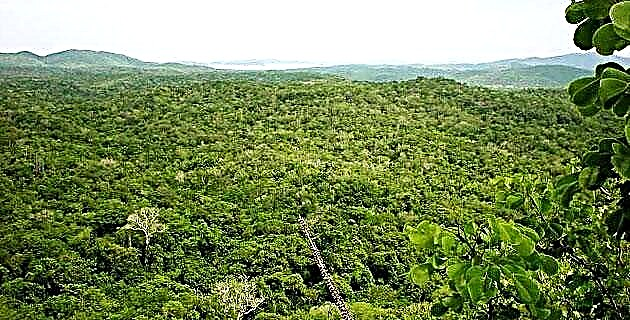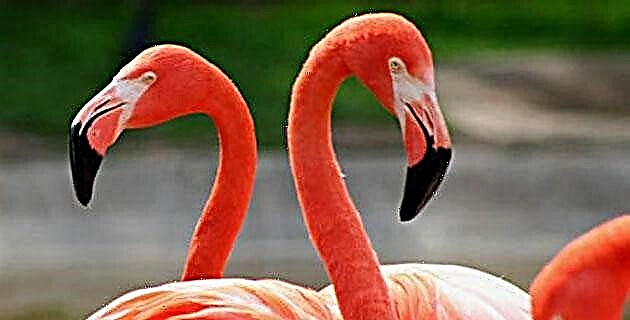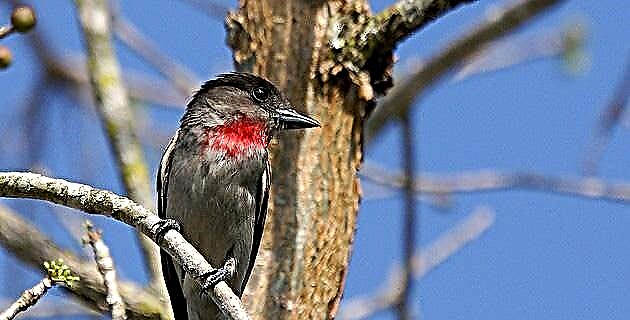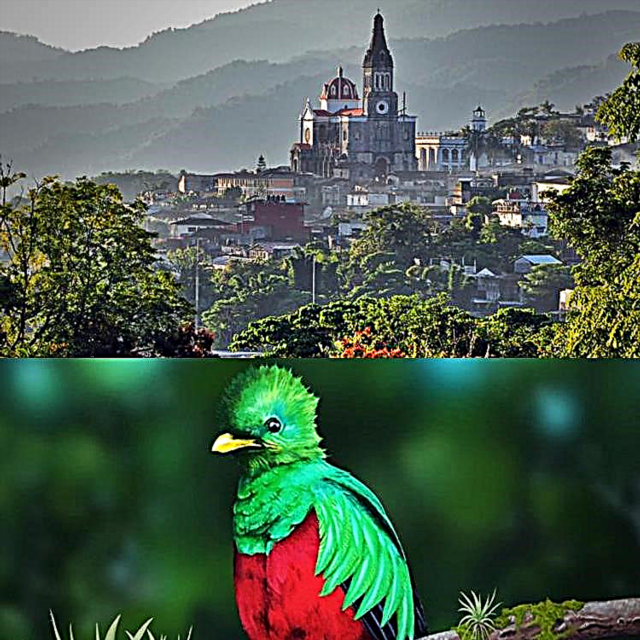He Magic Town Poblano de Cuetzalan offers like no other the magic of Mexican pre-Hispanic culture. This complete guide will allow you to know the town without missing anything of interest.
1. Where is Cuetzalan located and what is it like?
Cuetzalan is the head of the Puebla municipality of Cuetzalan del Progreso, northeast of the state of Puebla. Reached the rank of Magic Town Mexican in 2002, thanks to the intensity and anthropological and cultural value of its indigenous life and the beauty of its architecture. It is a town with sloping streets, with houses with wide eaves and thick walls painted in white and red, which give it a peaceful and cozy atmosphere.
2. What weather can I find there?
Cuetzalan has the semi-humid sub-tropical climate typical of the populations settled in the foothills of the Sierra Norte de Puebla. The area is rainy and the forests in the nearby mountains are foggy, so the fog frequently descends on the town and the clouds almost touch the ground. You must keep these weather events in mind during your visit and take the necessary precautions. The temperature is somewhat higher than 22 ° C in the hottest months.
3. How do I get to Cuetzalan by road?
The distance between Mexico City and Cuetzalan is about 300 kilometers in a southeast direction, which can be covered in about 4 and a quarter hours by taking the highway to Puebla de Zaragoza. Arriving in Puebla, the route to take is Apizaco - Zacapoaxtla - Cuetzalan. From Puebla de Zaragoza, the journey to the Magic Town is 175 km north-east. Buses depart from the main land terminals in Mexico City and Puebla on direct trips to Cuetzalan.
4. What does "Cuetzalan" mean?
The Quetzal is a fundamental animal in Mesoamerican indigenous mythology and the beautiful feathers of the bird were sought after by the Indians to offer them to the gods and to use them in essential clothing and rites. It is believed that the original name of «Cuetzalan» was «Quetzalan», which means «place of abundance of quetzals». The most accepted meaning for «Cuetzalan» is «bunch of red feathers with blue tips on two teeth»
5. What was the pre-Hispanic and Hispanic evolution of the town?
It is believed that towards the end of the pre-Christian era, Cuetzalan was part of Totonacapan, the pre-Hispanic region that developed around El Tajín, near the current Veracruz city of Papantla de Olarte, and supposed capital of the Totonaca empire. This version is supported by the archaeological evidence found in the municipality of Cuetzalan del Progreso. During the conquest, Cuetzalan was evangelized by Franciscan friars and it was an important economic and commercial center, called San Francisco Cuetzalan.
6. On what do you base your attractions of Pueblo Mágico?
The variety and intensity of indigenous life in the town is its main feature of interest. Every Sunday celebrates one of the most culturally rich tianguis in all of Mexico, which they turn into a kind of pre-Columbian party, with dances, shows and sale of all kinds of objects. Likewise, the medicine and gastronomy of indigenous origin has superb samples, such as the yolixpa and the tlayoyos, all these attributes together with the beauty of the town.
7. What can you tell me about your Sunday tianguis?
The Sunday tianguis of Cuetzalan is a ritual from the dress. The men wear white, while the women dress in the colors that for centuries corresponded to the communities and towns that went to the street market, including white, black and blue. The variety of products at the tianguis includes typical mountain embroidery, huaraches, flowers, coffee and other vegetable products, as well as traditional food and drinks. When you are admiring a craft while drinking a yolixpa and suddenly the spectacle of the flyers starts, you feel like in the days before Cortés.
8. What is yolixpa and what is it used for?
Yolixpa is a drink native to the Sierra de Puebla that constitutes one of the greatest gastronomic and cultural expressions of the town of Cuetzalan. It is made with a huge amount of herbs, at least 23, and began being used as a remedy made by indigenous healers and later as a drink to combat the cold of the mountains. The translation of «yolixpa» is «medicine of the heart», from the Nahuatl terms «yolo», which means «heart» and «ixpactic», which means «medicine»
9. How is yolixpa prepared?
Although the recipes are somewhat reserved, it is known that between 23 and 30 herbs that occur in the mountains are used, among these sage, mint, basil, mint, oregano and thyme. The herbs are left to rest in water mixed with brandy, helping the alcohol to preserve the liquid. The original recipe, for medicinal purposes, did not contain sweeteners and was very bitter. As commercial marketing can do anything, even in pre-Columbian towns, there are now flavored versions.
10. Where can I try a yolixpa in Cuetzalan?
The yolixpas of Cuetzalan are the most famous in the state of Puebla and its surroundings. They are prepared in 4 basic versions: totally natural, sweetened, flavored with fruits and grains, but without sweetening; and those flavored and sweetened. The 100% natural ones have the green color provided by the herbs. The most commonly used flavorings are passion fruit, orange, coconut, and coffee. The sweeteners are generally honey and brown sugar. In any restaurant, bar or stall in Cuetzalan you can drink a yolixpa and take away bottles are also available.
11. Does the town stand out architecturally?
Cuetzalan is a town whose sloping streets and houses with large eaves painted white and red give it a pleasant architectural profile. Apart from the general village landscape, there are some buildings that constitute architectural jewels, among which are the Municipal Palace, the Church of San Francisco, the Chapel of the Immaculate Conception and the Sanctuary of Guadalupe.
If you want the 12 things to do in Cuetzalan click here.
12. What is the appeal of the Parish of San Francisco?
The original building of the San Francisco de Asís temple was erected during the 17th century, with several subsequent modifications, the last one in the 1940s. Its striking 68-meter high clock tower, with Renaissance and romantic lines, was added at the beginning from the 19th century and is the highest among the churches in the state of Puebla. In the middle of the atrium there is a pole for the execution of the dance of the Voladores. On the sides of the main altar is framed the "Canticle of Brother Sun"
13. Is the Chapel of the Immaculate Conception interesting?
This chapel was ordered to be built by a local family at the end of the 19th century, being completed in 1913. It has the particularity that it is oriented in a south-north direction, contrary to the Catholic architectural mandate that churches must have the main facade facing the West. The builders may not have been very devout, but they left a beautiful work popularly called the La Conchita church. Inside there is a religious mural by the local painter Joaquín Galicia Castro.
14. What can you tell me about the Shrine of Guadalupe?
This church with a neo-Gothic façade was completed in record time by the standards of the time, since it was built in only 5 years, between December 1889 and January 1895. It is opposite the Cuetzalan cemetery and was conceived in the image of the Sanctuary of the Virgin of Lourdes, from Louvre, France. Its most striking component is the tall and slender tower decorated with rows of clay pots, which is why it is colloquially called the "Church of the Jarritos"
15. What is the interest of the Municipal Palace?
The construction of this majestic building of rustic neoclassical architecture was completed in 1941, according to a partial replica of the Roman basilica of Saint John Lateran. In the center of its portico there is a national coat of arms and the top is decorated with a sculpture by Cuauhtemoc, the work of the local artist Isauro Bazán.
16. What is the history with your current House of Culture?
The vast and majestic building of the Cuetzalan House of Culture began being called the "House of the Machine" or the "Big Machine" at the end of the 19th century, when it was built as the main center of the coffee industry in the area. The business house with Gothic windows had rooms for classifying and storing grain, offices, areas for deliveries and for the gigantic machine that gave it its name. It is currently the headquarters of the Calmahuistic Ethnographic Museum, as well as the Library and the Municipal Archive.
17. What can I see in the Ethnographic Museum?
The Calmahuistic Ethnographic Museum is a sample on the anthropological environment of Cuetzalan from archaeological pieces extracted from the Yohualichan site, objects of daily use since the creation of the town, photographs and documents. Fossils, instruments and tools of the Totonac civilization, traditional costumes, musical instruments, looms, handicrafts and other pieces are exhibited. The collection is contained in 7 rooms of the Cuetzalan House of Culture and has the particularity that the information is in Spanish and Nahuatl.
18. What attractions do Cuetzalan festivals have?
The first days of October are full of joy, excitement and showiness in Cuetzalan since on the 4th the patronal feast is celebrated in honor of San Francisco de Asís and during the week the Coffee Fair takes place. Another very interesting event is the National Fair of Huipil, an indigenous festival that also takes place in the first week of October. This event elects an indigenous queen and the candidates must be indigenous young people who speak Nahuatl, wearing the typical Cuetzalteco costume. Cuetzalan festivities are rich in pre-Hispanic dances, among them the Dance of the Quetzales and the Voladores.
19. What is the most interesting thing about your gastronomy?
Cuetzalteca cuisine is based on fresh ingredients produced in the foothills of the mountains, whose harvests are favored by the high humidity of the area. The gastronomy shows native dishes and others fused with the culinary art of Spain and other regions of Mexico. Some of the important products of the local cuisine are mushrooms, aromatic herbs, fruits, mainly passion fruit (passionflower, passion fruit); And coffee. Of course, the star drink is yolixpa and in the desserts the sweets prepared with passion fruit and macadamia stand out. Another local delicacy is the Tayoyos.
20. I have heard about the Tayoyos of Cuetzalan, what are they like?
Tayoyos, also called tlayoyos, tlacoyos and by other names, are a very popular Mexican snack in various regions of the country. In its basic form, it is a thick corn tortilla, filled with a stew of beans or other grains, garnished with a sauce of chili peppers, nopales and other ingredients. Cuetzaltecos tayoyos are made with a dough based on cooked green peas and avocado and green chili leaves; fried in animal butter and seasoned with cheese and a spicy sauce.
21. Can I get an authentic handicraft?
The Matachiuj Handicraft Market, located in the center of Cuetzalan on Calle Miguel Alvarado, a few blocks from the town's main square, offers textile garments made with traditional backstrap looms. You can also find basketry objects and wood carvings, made by family workshops in the town. Among the variety of textile pieces are huipiles, backpacks and rebozos.
22. How did indigenous radio originate?
Cuetzalan is one of the pioneering Mexican towns in the development of indigenous radio broadcasting promoted by the System of Indigenous Cultural Broadcasters of the National Commission for the Development of Indigenous Peoples. In the case of Cuetzalan and the Sierra Norte de Puebla, the emissions are directed to the Nahua and Totonac ethnic groups. Music is what identifies these peoples, mainly Huapango, Tapaxuwan and Xochipitsauak, as well as dance music, holy sounds and other ritual musical manifestations.
23. What other places do you recommend visiting in Cuetzalan del Progreso?
5 minutes from Cuetzalan is the town of San Miguel Tzinacapan, which has a picturesque church and a rich heritage of traditional dances. The music of indigenous flutes, native drums and bells, together with that of instruments from Spain, such as violins and guitars, serves as the background for the dances and the Voladores show. Also 5 minutes from Cuetzalan is San Andrés Tzicuilan, which has refreshing pools and numerous waterfalls, such as Las Brisas, Las Hamacas, La Atapatahua, Atltepetl and El Salto.
24. What can I see in the archaeological zone of Yohualichan?
7 kilometers east of Cuetzalan is this archaeological site, a work from the beginning of the classical period, approximately from the beginning of the second century AD. The Yohualichan settlement was built by Otomi and Totonacs who arrived from El Tajín. The splendor of the site occurred around the 600s and its decline began around the 900s with the arrival of the Toltecs.
25. Is it worth going to Cuichat?
Another interesting town near Cuetzalan is Cuichat, which has lakes that are good for swimming. Nearby there are some cave systems, among which we can mention the Amocuali cave or Devil's cave, a place where, according to myth, the visitor's spirit remains trapped if he does not say the magic words “let's go »
26. What can you tell me about the attractions of the neighboring municipalities?
Cuetzalan del Progreso borders 7 other Puebla municipalities: Jonotla, Tlatlauquitepec, Ayotoxco de Guerrero, Zoquiapan, Tenampulco, Zacapoaxtla and Nauzontla. Jonotla is located 24 kilometers from Cuatzalan and has a 16th century temple, natural spas on the Apulco River, waterfalls and caves. Tlatlauquitepec is located 65 kilometers from Cuetzalan and has attractive buildings, such as the Sanctuary of the Lord of Huaxtla and the Church and former convent of Santa María, as well as numerous waterfalls.
27. What do you recommend I see in the other municipalities?
Zacapoaxtla is located 35 kilometers from Cuetzalan and is a city that preserves a beautiful provincial architectural style. Among its most attractive buildings are the zócalo, the Municipal Palace and its kiosk and the Lord of Nahuixesta temple. The "Xolapalcali" Site Historical Museum works in the Municipal Palace. Other attractions of Zacapoaxtla are its canyons and canyons that can be admired from various viewpoints and some waterfalls, highlighting La Gloria, 35 meters high.
28. Where can I stay?
Since it was included in the Mexican Magic Towns system, Cuetzalan has been creating an attractive hotel and service offer. These are small establishments, in line with the characteristics of the town and the environment. Among the hotels that offer good value for money is the Hotel La Casa de Piedra, a beautiful accommodation one block from the main square. Taselotzin is another cozy hotel, which has a small botanical garden. Reserva Azul, in the El Cuitchat Community, is made up of beautiful wooden cabins.
29. What other options would you recommend?
Hotel Villas Cuetzalan, at Km 5.5 of the Cuetzalan - Zacapoaxtla highway, has spectacular views and they bake their own bread. Posada La Plazuela, in Hidalgo N ° 3, operates in a traditional mansion with cozy rooms. El Encuentro is a hotel near the center of town, with simple rooms and moderate prices. Other lodging options in Cuetzalan are Aldea San Francisco de Asís, Mesón Yohualichan, Chiuanime and Cabañas Quinta Real Cuetzalan.
30. Where to eat in Cuetzalan?
La Milagrosita is a small restaurant, ideal to taste some typical dishes of Cuetzaltecan cuisine. Peña Los Jarritos is a beautifully decorated house and features live music. At Café Aroma they are experts in the grain and prepare the drink in your favorite way. Restaurant Yoloxochitl is recommended for its mushrooms. Café Restaurant Museo La Época De Oro operates in a beautiful house, exhibits a sample of antiques and is recognized for its Tayoyos.

We are sorry to have to finish this tour of Cuetzalan. We hope that the information will be useful for your trip to the Magic Town and that we will meet again very soon.


